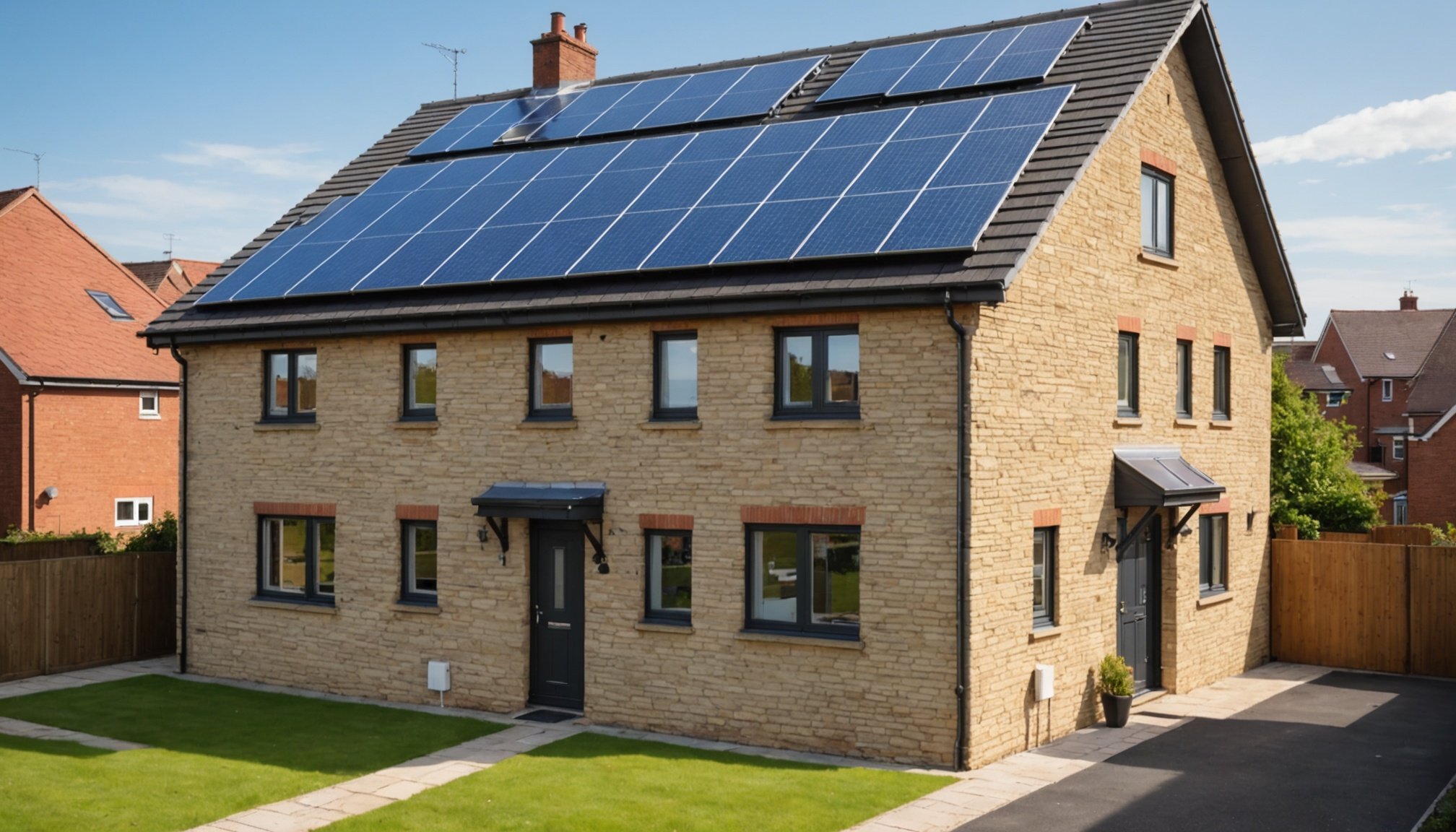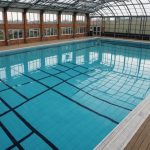Understanding Solar Thermal Technology
Solar Thermal Energy harnesses the sun’s heat to generate hot water, providing an energy-efficient alternative to conventional systems. At its core, solar thermal technology includes collectors that absorb sunlight and convert it into thermal energy. This heat is then transferred to a liquid, often water or antifreeze, circulating in hot water systems for domestic use.
The key components of a solar thermal system are solar collectors (typically flat plate or evacuated tube), a heat exchanger, a hot water storage tank, and the control systems. These devices work seamlessly to optimize energy capture and distribution.
A lire en complément : Transform Your UK Home Office: Smart Tips to Minimize Eye Strain and Enhance Natural Light
In comparison to traditional electric or gas-based hot water systems, solar thermal technology stands out due to its reduced reliance on fossil fuels and lower operating costs. It represents a significant stride toward energy efficiency, making it an attractive choice for environmentally conscious homeowners.
Moreover, solar thermal systems are versatile and can be integrated with existing hot water systems, enhancing their appeal. This adaptability makes them a formidable competitor in the realm of renewable energy-efficient solutions. As a result, understanding and investing in solar thermal energy is a step towards sustainable living.
Avez-vous vu cela : Maximizing Under-Stair Storage: Creative Solutions for Your UK Terraced Home
Benefits of Solar Thermal Systems for Semi-Detached Homes
Solar thermal systems provide a wealth of benefits for semi-detached homes, promoting substantial cost savings and energy independence. First and foremost, these systems significantly enhance energy efficiency by cutting down the reliance on traditional electricity or gas-based heating systems. This translates directly into a reduction in energy bills, ensuring homeowners see tangible financial benefits.
Moreover, the environmental advantages cannot be overlooked. By harnessing sustainable energy, solar thermal systems contribute to a dramatic reduction in one’s carbon footprint. This is a crucial step towards a more eco-friendly lifestyle, aligning with global efforts to combat climate change.
Additionally, installing a solar thermal system can enhance a home’s property value. As the demand for green energy solutions increases, homes equipped with such systems become more attractive to potential buyers, thus increasing marketability. This added value, coupled with reduced utility costs, makes solar thermal systems a wise investment for homeowners looking to future-proof their properties. Integrating these systems not only benefits individual households but also plays a vital role in supporting broader environmental goals.
Installation Guidelines for Solar Thermal Systems
Installing a solar thermal system in a semi-detached home requires careful planning and execution for optimal results. Begin with a thorough site assessment to determine the best location for solar panel installation. Key factors include roof orientation, angle, and the presence of potential shade sources such as trees or nearby buildings.
Site Assessment
Ideally, panels should face south with an angle that ensures maximum sunlight exposure. This initial step sets the stage for achieving the greatest energy efficiency.
Choosing the Right System
Selecting the correct system involves evaluating different types of solar thermal systems suited for semi-detached homes. These systems vary in size and technology, such as flat plate collectors or evacuated tube designs. Consider current hot water system needs and future energy goals when making your choice.
Hiring Professionals versus DIY
Deciding between professional installation and a DIY solar setup involves weighing the pros and cons. Professional installers offer expertise and a reliable finish, while DIY methods can reduce initial solar thermal costs. However, DIY installations may demand more time and technical skills, underscoring the importance of precise execution for the best return on investment.
Cost Considerations and Savings
Solar thermal costs can initially seem daunting, yet their potential for energy savings and long-term benefits often outweigh the upfront investment. While the initial installation costs can range from £3,000 to £5,000 in the UK, ongoing maintenance expenses are relatively modest. Homeowners can typically expect to pay minor annual fees for routine system maintenance, ensuring optimal efficiency and longevity.
Furthermore, solar thermal systems frequently lead to substantial return on investment thanks to their significant contribution to reducing energy bills. Users regularly witness a drop of 40-60% in water heating bills, effectively offsetting initial expenditures over time. This efficiency gains more appeal with available financial incentives and government grants in the UK, such as the Renewable Heat Incentive (RHI). These programs provide payments to homeowners leveraging renewable heat technologies, aiding financial recuperation.
Considering these factors, investing in solar thermal energy becomes a strategic decision for both financial and environmental reasons. For individuals prioritising energy efficiency, these systems serve as a commendable option that marries immediate cost savings with long-term value. Understanding these financial aspects forms a crucial part of making informed decisions about solar energy transitions.
Maintenance and Longevity of Solar Thermal Systems
Solar thermal systems, like any technology, require regular maintenance to ensure optimal performance and longevity. Routine tasks include inspecting and cleaning the solar collectors to remove any debris or grime that might reduce efficiency. It’s essential to check heat exchangers and storage tanks for signs of wear or leaks, ensuring the system remains airtight and fully functional.
Regular system checks can preempt common issues, such as reduced energy efficiency due to buildup or malfunctions in the heat transfer process. Troubleshooting often involves diagnosing and addressing problems with circulation pumps or adjusting controls to maintain optimal water temperature levels.
The average lifespan of a well-maintained solar thermal system ranges from 20 to 30 years, significantly enhancing its return on investment. Ensuring that all components, such as antifreeze fluids, are maintained according to manufacturer recommendations can further extend system life. Warranties typically cover five to ten years, offering peace of mind against potential system faults.
These proactive maintenance steps not only preserve the system’s vitality but also maximise its potential for consistent energy savings, positioning solar thermal technology as a robust and enduring investment in sustainable living.
Case Studies of Successful Implementations
Explore real-life applications of solar thermal systems through insightful UK case studies. Semi-detached homes have effectively utilised these systems, reaping substantial energy savings while boosting energy efficiency. Homeowners often laud the technology for its seamless integration into existing architectures and the significant reduction in energy bills.
For instance, in a notable project in Kent, a family reported a reduction in gas usage by 50%, attributing these savings to their recently installed solar thermal system. This clear return on investment underscores the utility of adopting renewable energy solutions. Such experiences emphasize not only the financial benefits but also the environmental advantages.
Further insights come from homeowner testimonials. Many describe the ease of installation and the intuitive nature of system controls. They highlight the enhanced property value and increased market appeal post-installation. These rich narratives offer valuable lessons, showcasing the importance of choosing the right installation approach, be it DIY or professional, to maximise gains.
These case studies illustrate best practices, demonstrating how thoughtful planning and execution lead to long-term success, supporting solar thermal technology’s role in the shift towards sustainable living.











